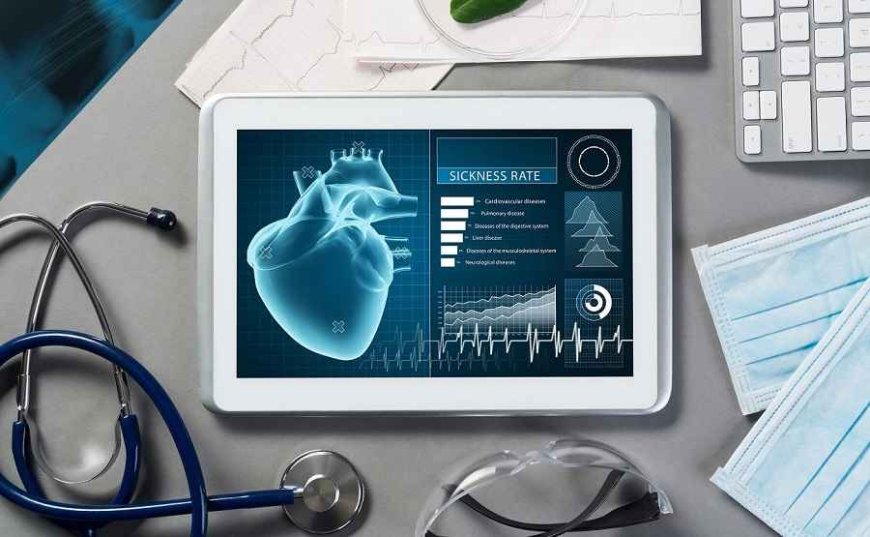The Internet of Medical Things: Revolutionizing Healthcare through Connectivity
The convergence of technology and healthcare has given rise to a remarkable phenomenon known as the Internet of Medical Things

In the age of digital transformation, the convergence of technology and healthcare has given rise to a remarkable phenomenon known as the Internet of Medical Things (IoMT). This revolutionary concept is reshaping the landscape of patient care, medical research, and healthcare systems, ushering in an era of unprecedented connectivity and innovation.
The Anatomy of IoMT: Connecting Devices for Better Health
At its core, the Internet of Medical Things involves the interconnection of medical devices, wearables, sensors, and other healthcare technologies through the internet. This network enables real-time data collection, analysis, and communication, empowering healthcare professionals and patients alike to make more informed decisions.
Imagine a patient with a chronic condition equipped with a wearable device that continuously monitors their vital signs. This data is then transmitted to their healthcare provider, who can remotely monitor their health status and intervene promptly if any abnormalities arise. This level of proactive care has the potential to prevent complications and improve the overall quality of life for patients.
Enhancing Diagnostics and Treatment
One of the most profound impacts of IoMT is its ability to enhance diagnostics and treatment strategies. Medical devices embedded with sensors can provide continuous data streams, enabling early detection of anomalies and trends that might otherwise go unnoticed. For instance, wearable ECG monitors can detect irregular heart rhythms, allowing for timely intervention and potentially preventing heart attacks.
Moreover, IoMT can enable personalized medicine by tailoring treatment plans to individual patients based on their unique health data. This can lead to more effective and efficient interventions, minimizing side effects and optimizing outcomes.
Remote Patient Monitoring: Transforming Care Delivery
IoMT's role in remote patient monitoring is a game-changer in healthcare delivery. Elderly patients, those with chronic illnesses, and individuals recovering from surgery can now be closely monitored from the comfort of their homes. This not only reduces the burden on healthcare facilities but also enhances patients' independence and overall well-being.
In rural or underserved areas, where access to medical facilities is limited, IoMT can bridge the gap by providing remote consultations, diagnosis, and treatment recommendations. This democratization of healthcare can significantly improve health outcomes for populations that were previously underserved.
Challenges and Considerations
While the potential of IoMT is immense, its widespread adoption is not without challenges. Privacy and security concerns are paramount, as the transmission and storage of sensitive medical data raise ethical dilemmas. Ensuring that data is encrypted, secure, and compliant with privacy regulations is essential to build trust among patients and healthcare providers.
Interoperability is another challenge. Medical devices and systems must seamlessly communicate with each other to provide a cohesive and comprehensive picture of a patient's health. Standardizing communication protocols and data formats is crucial to achieve this interoperability.
The Road Ahead: Ethical, Legal, and Technological Implications
As IoMT continues to evolve, it is imperative to address the ethical, legal, and technological implications it poses. Striking a balance between convenience and privacy, harnessing data for research while protecting individual rights, and ensuring that advancements are accessible to all segments of society are crucial considerations.
Technological advancements, such as edge computing and AI-driven analytics, will play a pivotal role in making IoMT even more effective. Edge computing allows data to be processed closer to its source, reducing latency and enabling faster decision-making. AI can analyze vast amounts of medical data, identifying patterns and insights that can lead to improved diagnoses and treatment strategies.
A New Era of Healthcare
The Internet of Medical Things represents a paradigm shift in healthcare, offering a plethora of opportunities to improve patient outcomes, enhance diagnostics, and transform healthcare delivery. By leveraging the power of connectivity, data analytics, and technological innovation, IoMT has the potential to revolutionize the way we approach health and well-being.
However, as we embrace the promises of IoMT, we must also navigate the challenges it presents. Safeguarding patient data, ensuring interoperability, and addressing ethical concerns are vital to building a robust foundation for this transformative technology.
As IoMT continues to weave itself into the fabric of healthcare, its impact will undoubtedly be felt across the globe. With the right ethical framework and technological advancements, the Internet of Medical Things has the potential to lead us into a future where healthcare is more personalized, proactive, and accessible than ever before.
